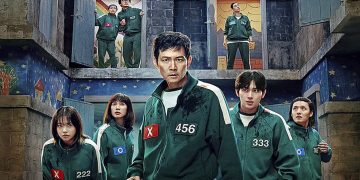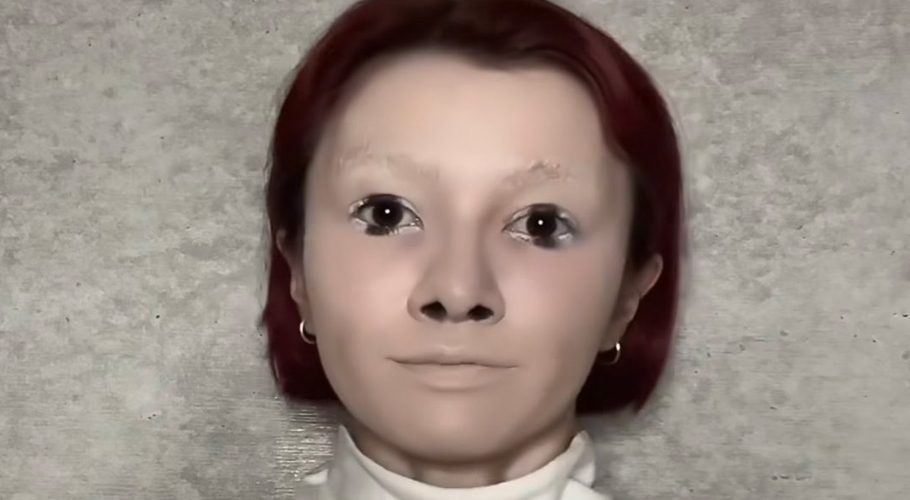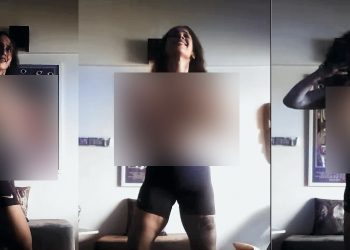Pale skin, vacant eyes, and subtly distorted features set to a backdrop of surreal musical tracks – this latest TikTok trend embraces an unsettling peculiarity.
Referred to as the uncanny valley makeup trend, creators employ makeup techniques to transform into hyper-realistic bots. Some of the videos within this trend have amassed as many as 13 million likes on the platform.
In popular culture, robots have often been associated with fear and a sense of unreliability, from the iconic Terminator in 1984 to the thought-provoking Ex Machina in 2014. In our current landscape of AI deep fakes and social humanoid robots, the boundary between reality and illusion becomes increasingly blurred.
So, what exactly is the uncanny valley?
The uncanny valley represents the discomfort we experience when encountering something that closely resembles a human but falls slightly short. While people generally appreciate the gradual transition of artificial objects becoming more human-like, there is a tipping point. When these objects become too human, a subtle disconcerting feeling arises – a phenomenon studied and termed the uncanny valley.
Humanoid robots commonly trigger the uncanny valley effect, but computer-generated graphics in video games and films can also induce a sense of unease among audiences.
For instance, the original musical film Cats, beloved for its melodic track “Memory,” was widely embraced in 1998. However, the 2019 remake faced criticism for its unsettling graphics, as extensive visual editing transformed human actors into creatures with a human resemblance.
The uncanny valley is not solely tied to physical appearance but is also influenced by the character’s movements and expressions. According to Mike Seymour from the University of Sydney, poorly animated human-like figures can be equally eerie.
Why do certain robots evoke fear?
Throughout history, researchers have proposed various explanations for the unsettling reaction to hyper-realistic robots. Danger avoidance and mortality salience are among the theories suggested in a 2010 research publication by the Konrad Lorenz Institute for Evolution and Cognition Research.
Danger avoidance, rooted in the human instinct to avoid corpses, may contribute to the uncanny valley effect. The resemblance of humanoid robots to deceased or decomposing human bodies triggers discomfort.
I love the uncanny valley makeup trend because it taps into the primal fear of being stalked by a not-quite-human thing that’s ambiguously threatening. Modern thrillers often confuse surprise with fear: Lingering creepiness is much scarier than one-time jump scares and CGIs. pic.twitter.com/tbpUEt6c8O
— Sherry (@SchrodingrsBrat) November 23, 2023
Mortality salience, the awareness of inevitable death, also plays a role. Research by human-computer interaction expert Karl F Macdorman suggests that uncanny androids disturb viewers by eliciting a fear of death.
Origins of the uncanny valley concept
The uncanny valley concept was first introduced by Masahiro Mori in 1970, a professor of engineering at the Tokyo Institute of Technology in Japan. Mori’s intuition, shaped by his discomfort with wax figures and prosthetic hands, led to the formulation of the uncanny valley theory. Subsequent research has explored potential connections between the realism of robots and feelings of discomfort.
Why is it called the uncanny valley?
Masahiro Mori accompanied his theory with a graph plotting affinity (fondness for an object) against human likeness. The graph illustrates affinity increasing as an object becomes more human-like until it reaches a peak. Afterward, affinity rapidly drops, only to rise again as human likeness approaches 100 percent. This dip in the graph resembles a valley, giving rise to the name “uncanny valley.”



































